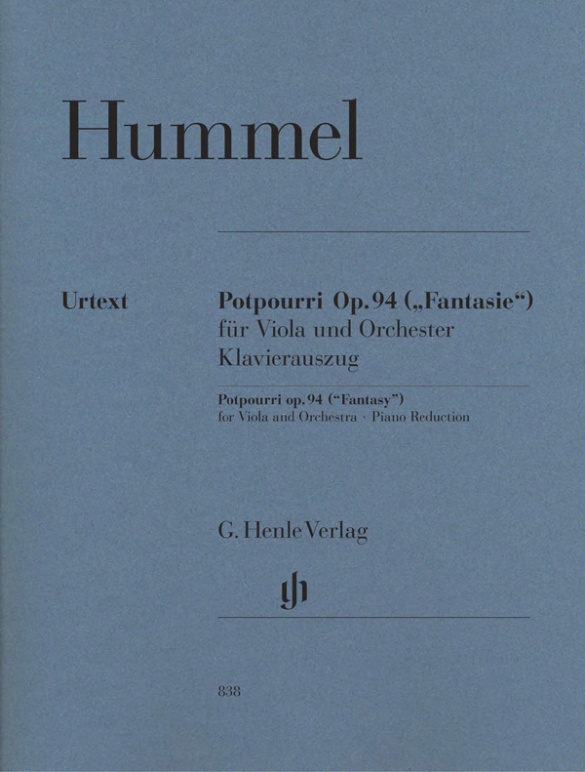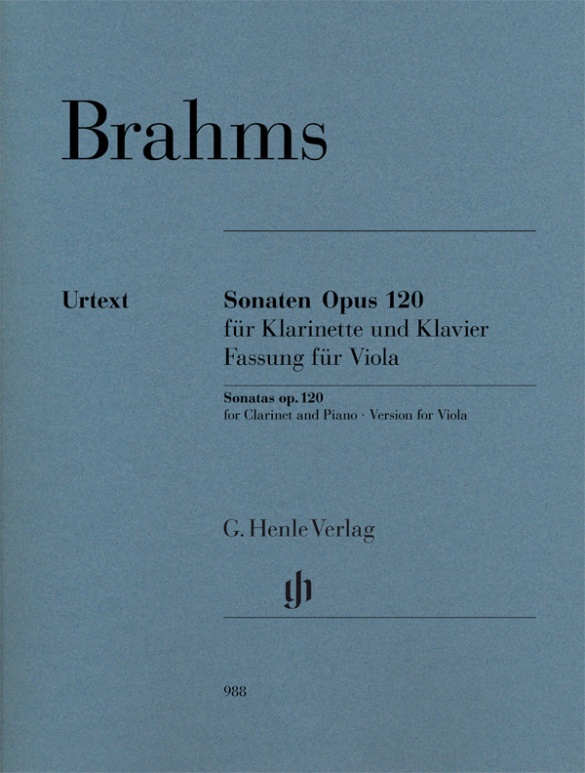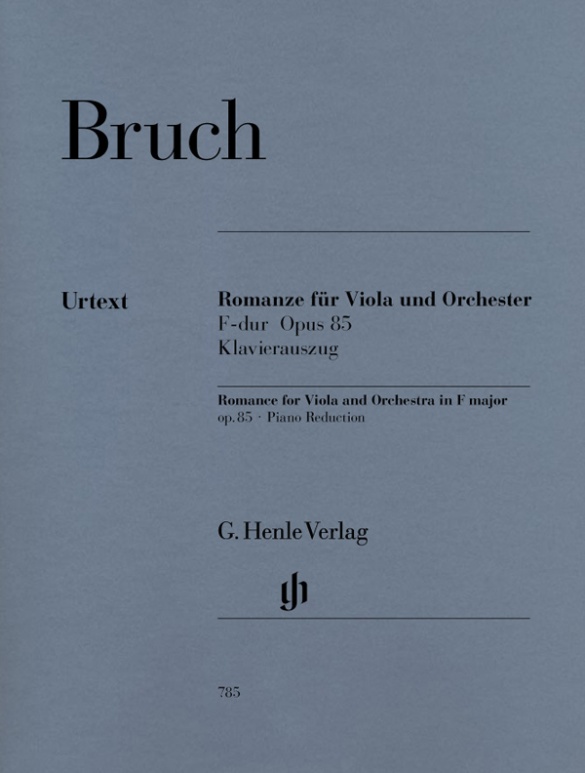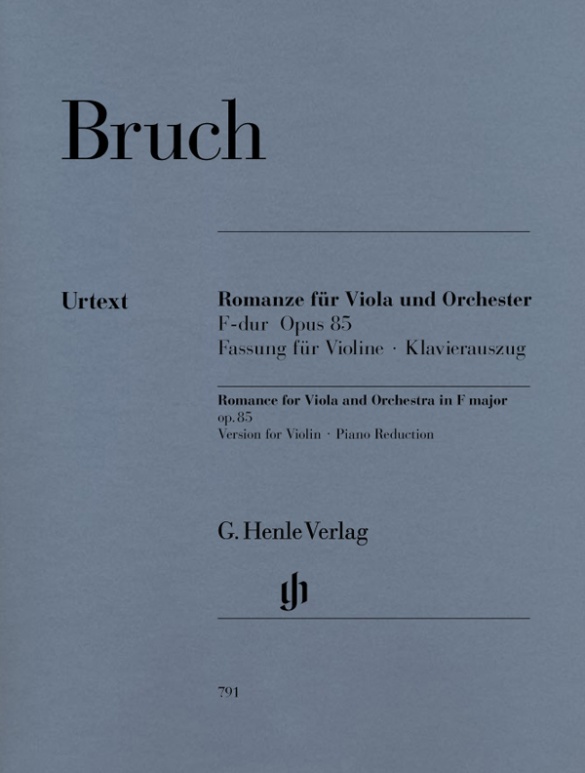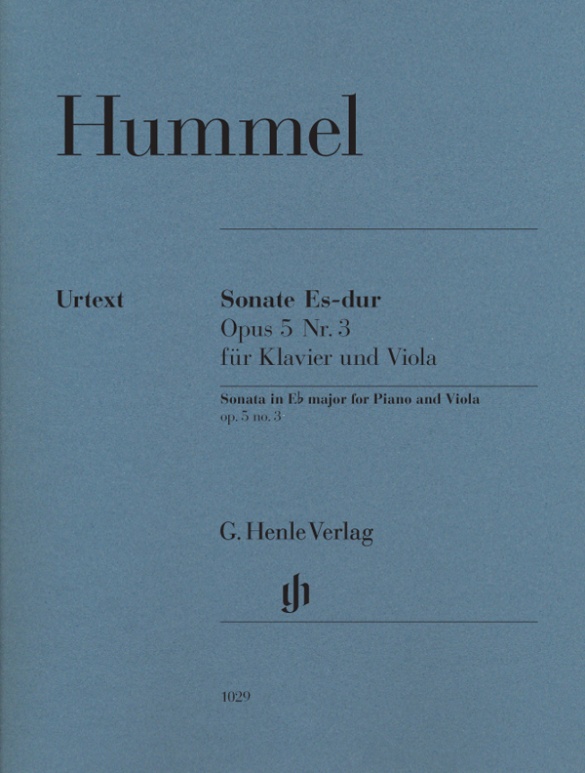

Johann Nepomuk Hummel
Viola Sonata E flat major op. 5 no. 3
Johann Nepomuk Hummel (1778–1837) is wrongly remembered, first and foremost, as Mozart’s pupil. In his day he was one of the most respected pianists and was also a composer with quite some influence on later generations.
It is not known when exactly he composed his viola sonata. It was selfpublished in 1798 in Vienna together with two violin sonatas. Numerous reprints, including ones in France and England, testify to the extraordinary popularity of the sonata, both then and today.
mws-henle.cms.title-works.headline
mws-henle.cms-product-detail.composer-headline
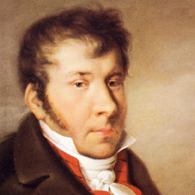
Johann Nepomuk Hummel
Composer and pianist, whose works are positioned stylistically at the transition from Classicism to Romanticism. They encompass nearly all genres, including six piano concerti, sonatas, chamber music, incidental music, and sacred works. Admired as a virtuoso during his lifetime, he showed his technical skills in a comprehensive course on the art of piano playing. He was a member of the Institut de France and the Gesellschaft der Musikfreunde (Society of Friends of Music) in Vienna, among others.
| 1778 | Born in Pressburg (Bratislava) on November 14. His father, a professional musician, gives him his first music lessons. |
| 1786–88 | The family relocates to Vienna, where he becomes the pupil of Wolfgang Amadeus Mozart. |
| 1788–93 | With his father he undertakes a multi-year concert tour through Europe. In London he meets Joseph Haydn. |
| from 1793 | Back in Vienna, he becomes the pupil of Johann Georg Albrechtsberger, Antonio Salieri, and Joseph Haydn. |
| 1804–11 | He is concertmaster of Prince Esterházy’s orchestra in Eisenstadt. |
| from 1811 | In Vienna he devotes himself primarily to composition and teaching. |
| 1813 | He marries Elisabeth Röckel, a singer at Vienna’s Hoftheater. |
| 1816–18 | He is Royal Württemberg Court Music Director in Stuttgart. |
| from 1819 | In February he becomes court music director in Weimar, and rises to become one of that city’s most important musical figures. |
| 1827 | In Vienna he meets Franz Schubert. He participates in the funeral of Ludwig van Beethoven. |
| 1828 | He publishes his Course of Instruction on the Art of Playing the Piano, which he had drafted in Weimar. |
| 1831 | With André Hippolyte Chelard he directs the Thuringia Music Festival in Erfurt. |
| 1837 | Dies in Weimar on October 17. |
mws-henle.cms-product-detail.author-headline
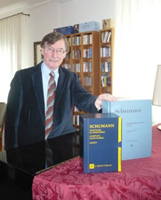
Ernst Herttrich (mws-henle.person.role.HERAUSGEBE)
Dr. Ernst Herttrich, born in 1942 in Würzburg, read musicology, history, German and theology at the universities in Würzburg and Cologne. In 1970 he earned his doctorate in Würzburg with a study of the expression of melancholy in the music of Mozart.
From 1970 to 1990 he was an editor at G. Henle Publishers in Munich, after which he was Head of the Beethoven Complete Edition for over 15 years. In 1999 he took over as Head of the Beethoven-Haus Publishers, and from 2001 was made Head of the Beethoven-Archiv, the research centre at the Beethoven-Haus.
He has been a visiting professor at Meiji Gakuin University in Tokyo and has undertaken several lecture tours both there and to Kyoto. His research interests include source studies, editorial techniques and music history. Herttrich’s publications include “Beethoven. Liederkreis an die ferne Geliebte” (Bonn 1999) and “Ludwig van Beethoven. Biographie in Bildern” (Bonn, 2000). Herttrich has edited over 100 Urtext editions for G. Henle Publishers.

Klaus Schilde (mws-henle.person.role.FINGERSATZ)
Prof. Klaus Schilde, born in 1926, spent his childhood in Dresden. There he was greatly influenced by Walter Engel, who taught him the piano (Kodaly method), composition and violin. From 1946–1948 he studied at the music conservatory in Leipzig with Hugo Steurer. After moving to the west in 1952 he studied with Walter Gieseking and Edwin Fischer, as well as with Marguerite Long, Lucette Descaves and Nadia Boulanger in Paris.
Schilde won numerous prizes. From 1947 onwards he gave concerts as a soloist and chamber musician on almost every single continent with renowned orchestras. He taught at the music conservatories in East Berlin Detmold, West Berlin, Munich, Tokyo (Geidai) and Weimar. From 1988–1991 he was President of the Staatliche Hochschule für Musik und Theater in Munich, where he also taught for decades as a professor. There are numerous radio and television broadcasts with Klaus Schilde as well as CD recordings. Schilde has contributed fingerings to almost 100 Henle Urtext editions.
Prof. Klaus Schilde passed away on 10 December, 2020.
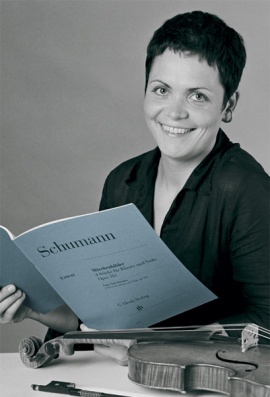
Tabea Zimmermann (mws-henle.person.role.FING VIOLA)
Product Safety Informations (GPSR)

G. Henle Verlag
Here you can find the information about the manufacturer of the product.G. Henle Verlag e.K.
Forstenrieder Allee 122
81476 München
Germany
info@henle.de
www.henle.com
This new urtext Henle edition contains the expected clean engraving, legible spacing, and critical report. ... This is a welcome addition to Henle's growing catalog of standard viola repertoire.
American String Teacher, 2013Diese Urtextausgabe von Hummels Bratschensonate ist besonders wertvoll, weil sie alle Fehler der Erstausgabe korrigiert und zusätzlich eine praktisch eingerichtete Stimme der bekannten Bratscherin Tabea Zimmermann liefert.
Schweizer Musikzeitung und ESTA Nachrichten, 2012Die von Ernst Herttrich betreute Urtext-Ausgabe ist rundum gelungen. Vor allem liefert sie einen Notentext, der schon durch das Schriftbild die Struktur der Komposition aufschließt. Viola- und Klavierstimme sind hervorragend lesbar. Der Kommentar erläutert editorische Fragen. Die zusätzliche Violastimme, die von Tabea Zimmermann mit Angaben zum Notenstrich und Fingersätzen versehen wurde, geht sehr sensibel mit dem Urtext um; die Fingersätze in der Klavierstimme von Klaus Schilde erweisen sich als hilfreich und praktikabel.
Das Orchester, 2012推荐
autogenerated_cross_selling
本书目其他版本
本书目其他版本


